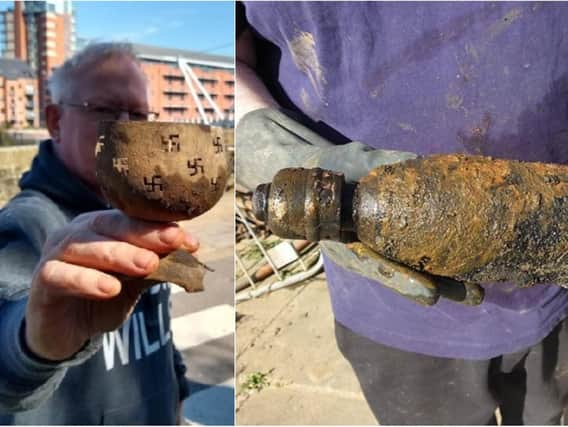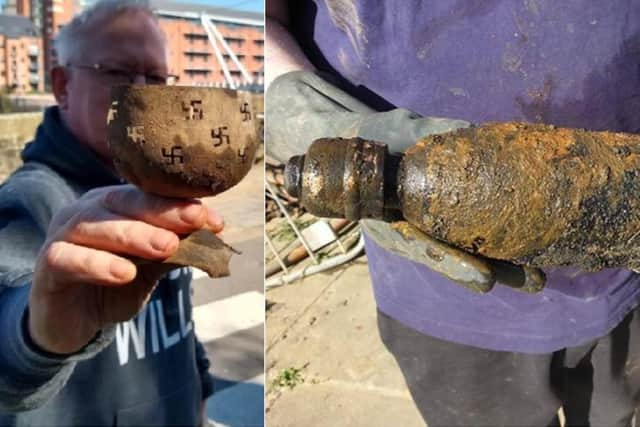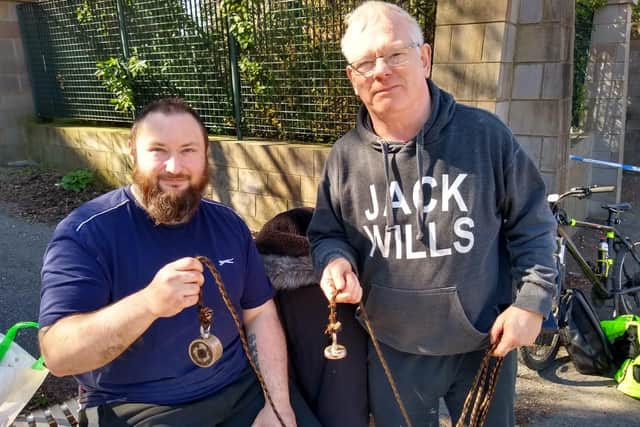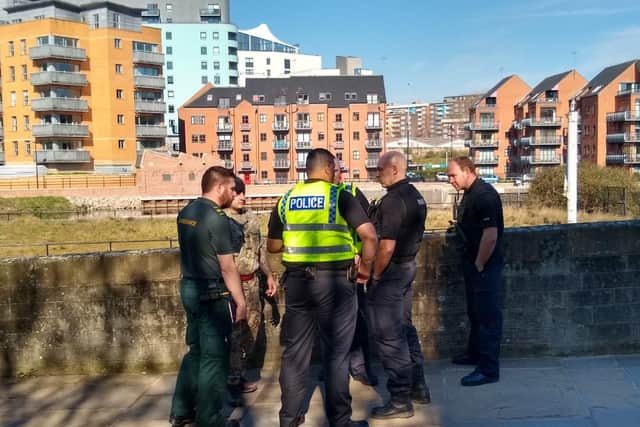Swastika engraved goblet and live Boer War bomb found in Yorkshire river - but how did they get there?


Dave Pearce and Ian Platt were magnet fishing in the River Aire near Crown Point Shopping centre when they pulled a live 18lb mortar from the water.
Alongside the incredible discovery, the pair also pulled a brass goblet engraved with Swatsikas out of the water. The date of the item is not known so it is not clear if the the goblet is connected to the Nazis or pre-dates the evil group's adoption of the symbol.
Advertisement
Hide AdAdvertisement
Hide AdDave, from Roundhay, is new to the hobby and had only been magnet fishing for a matter of weeks when he pulled out a 18lb mortar.


“It just felt average size,” Dave said. “We didn’t realise it was until we posted it online. We thought it could be something innocent like a gas canister or something.”
The pair posted a photo of the find online where the thriving online community of magnet fishers were able to identify it.
Ian said: “We posted the photos online and within two minutes he got a reply saying it’s probably a mortar bomb - get out of there.”
Advertisement
Hide AdAdvertisement
Hide AdPolice were called shortly after 11am and Crown Point Bridge and the stretch of the canal under it, where the bomb was left, were cordoned off. The bomb squad arrived at around 2.30pm and officers confirmed the bomb was from the Boer War, fought between the British Empire and two Boer states in South Africa from 1899-1902, and that it was live.


Bomb disposal experts took the device to East End Park and carried out a controlled explosion.
But how could an explosive from the Boer War end up in Yorkshire, thousands of miles from the battlefields of South Africa?
A soldier's souvenir?


Leeds did send men to assist the professional army in South Africa.
Advertisement
Hide AdAdvertisement
Hide AdThe Leeds Rifles, a volunteer force formed in 1860, were deployed and two companies of reservist soldiers served in the Boer War. The conflict was actually the Leeds Rifles' first battle honour.
The Rifles at the time were based at Carlton Barracks near Meanwood, and had a strong association with the Tetley brewery - many workers at the factory volunteered.
The ordnance found in the Aire could have been taken back to England as a keepsake by a local man who had seen service in South Africa.
Locally manufactured?
It's well-known that during later conflicts such as World War One, many of Leeds' factories were turned over to armaments production.
Advertisement
Hide AdAdvertisement
Hide AdYet during peacetime, there were also local metal workshops that specialised in manufacturing weaponry and ordnance. One of these was Greenwood and Batley, who were based at Albion Works on Armley Road.
The company specialised in military products in its early years, and became an engineering giant of the city. Bullets and other ammunition were among the arms sent for use in South Africa, and were stamped with the GB mark. It's possible that a stray Leeds-made shell found its way into the river before it could be shipped overseas.
The firm supplied armaments to the Confederate army during the American Civil War and later made World War One tanks. Albion Works was mothballed in 1987.
Goblet
The origins of the brass Swastika engraved goblet are less clear.
Advertisement
Hide AdAdvertisement
Hide AdIf the object dates to a similar time period as the bomb it won't be connected to the Nazi party who adopted the symbol in the 1930s.
For centuries the swastika had symbolised good luck in a number for different cultures before it took on a darker meaning in the 20th century.
